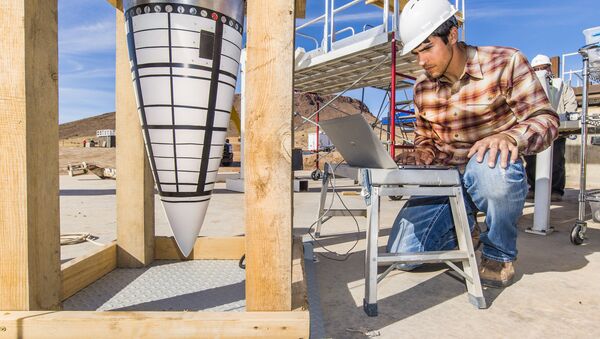On Monday, the US National Nuclear Security Administration announced that it has given the go-ahead for work on upgrading the B61 airborne nuclear bomb, authorizing the program to enter a post-engineering phase, which comes after four years of work.
This now means that the first upgraded bombs are set to roll out around 2020.

Alexander Perendzhiev, a Moscow-based military and political scientist has suggested that the nuclear weapon might actually be being upgraded for combat use.
“On the one hand, this is a planned upgrade of the nuclear weapons,” he told Radio Sputnik.
“The outdated nuclear weapons should be either utilized or re-encoded,” he explained.
On the other hand, the analyst said, there is a possibility that once the bombs are modernized, experts might add some additional options to the nuclear weapon’s explosion control.
Perendzhiev outlines five separate effects of nuclear explosions: blast, thermal radiation, Ionizing radiation, residual radiation and electromagnetic impulse.

Previously it was thought that these processes are uncontrollable. However, the analyst says, now there are discussions around the creation of a so-called “clean” nuclear bomb where it is possible to regulate the level of blast and Ionizing radiation or even make a zero-radiation bomb.
And this, he further suggested, may lead to a military and political solution to actually use such a bomb.
“It might lead the military to think that, if it can be regulated, it might be less dangerous than existing nuclear weapons. And this, in turn, might lead to a misbalance of the nuclear security,” he told Sputnik.
He further explained that the nuclear powers are no longer deterred by the notion of mutual destruction arising from the use of nuclear weapons.
“There are discussions on the possible use of nuclear weapons already on the expert level, that it might become a real weapon and not just a deterrent,” he said, noting that once again nuclear weapons might become a real combat weapon.
The B61 has been the principal US airborne nuclear bomb since 1968, when the first version was commissioned. With some of the modifications being canceled over the years and others withdrawn from use, only models 3,4,7,11 and 12 are currently in active service.
“Reaching this next phase of the B61-12 LEP is a major achievement for NNSA and the exceptionally talented scientists and engineers whose work underpins this vital national security mission,” NNSA Administrator Lt. Gen. Frank G. Klotz (Ret.) said in a statement.
“Currently, the B61 contains the oldest components in the US arsenal. This LEP (life extension program) will add at least an additional 20 years to the life of the system,” he added.
The LEP refurbishes both nuclear and non-nuclear components to extend the bomb’s service life while improving its safety, security, and reliability to meet long standing material requirements.
The statement also suggests that the LEP will reuse or remanufacture existing components to the maximum extent possible. The B61-12 will replace the existing B61-3, —4, —7, and —10 bombs.



